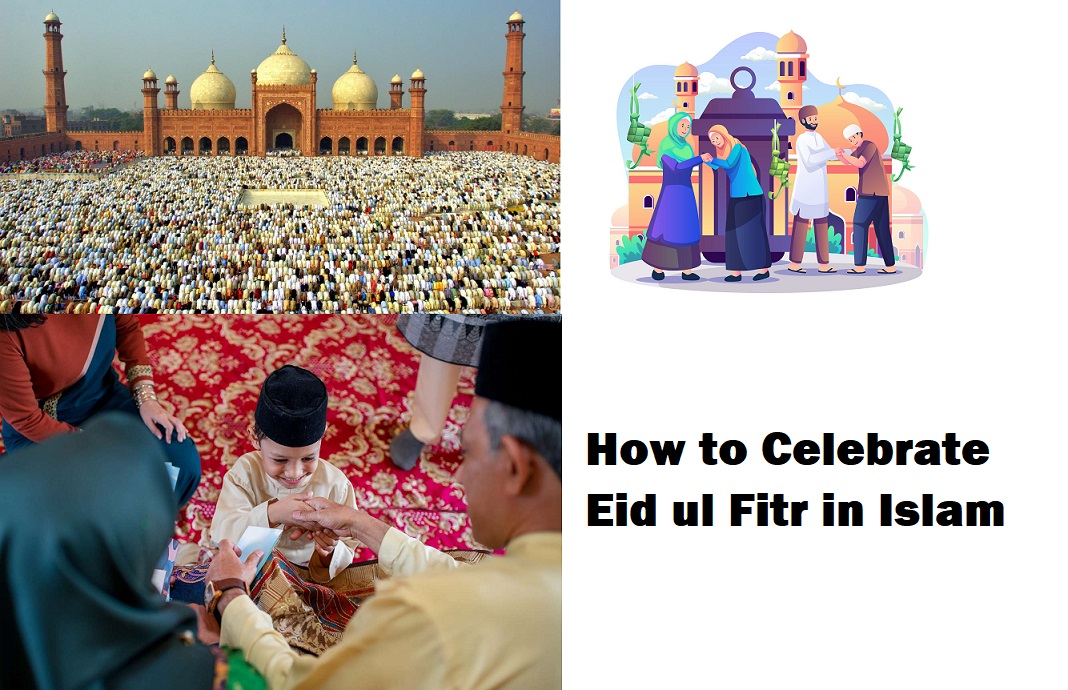- FREE Express Shipping On Orders $99+

How to Celebrate Eid ul Fitr in Islam
Eid al-Fitr is a significant Muslim holiday celebrated at the end of Ramadan. Eid ul-Fitr is a time of prayer, feasting, giving, and celebrating with loved ones, marking the end of Ramadan’s fasting period. To celebrate Eid ul-Fitr in Islam, follow these steps:
1. Saying Prayers
-
- Begin by praying salat ul-fajr, the pre-dawn prayer, on the first day of Eid.
- Recite the takbir, declaring faith, as you walk to the congregation.
- Perform the Eid prayer, following the imam’s movements.
2. Feasting and Decorating
-
- Start the day with seviyan, a traditional breakfast in some regions.
- Decorate your home with lights, lanterns, and festive banners.
- Visit relatives, exchange gifts, and enjoy special Eid foods.
3. Giving Charity and Gifts
-
- Donate food to charity before Eid begins.
- Give gifts to children, such as new clothes, toys, or money (eidi).
- Share goodwill, visit friends and family, and enjoy the festive atmosphere.
The Significance of Eid al-Fitr in Islam
The significance of Eid al-Fitr in Islam lies in its celebration of the end of Ramadan, the holy month of fasting. Eid al-Fitr, which means “festival of breaking the fast,” is a time for Muslims to express gratitude to Allah after a period of reflection and fasting during Ramadan. This festival marks the first time Muslims can eat during daylight hours after fasting from dawn to dusk throughout Ramadan. During Eid al-Fitr, Muslims come together to perform communal prayers, exchange greetings like “Eid Mubarak,” visit family and friends, give presents, enjoy feasts, wear new clothes, and visit the graves of relatives.
Eid ul Fitr Conditions
The conditions for Eid ul-Fitr involve fasting during Ramadan, celebrating with prayer, communal gatherings, feasting, giving gifts, showing gratitude through charity, and participating in the Eid prayer and sermon. The conditions for Eid ul-Fitr, the Islamic festival marking the end of Ramadan, include the following key aspects based on the provided sources:
-
- Fasting during Ramadan
Muslims must fast from dawn to sunset each day during the holy month of Ramadan.
- Fasting during Ramadan
2. Eid ul-Fitr Celebration
-
- Eid ul-Fitr is celebrated during the first three days of Shawwal, the tenth month in the Muslim lunar calendar.
- Muslims cleanse themselves, dress in new clothes, and perform communal prayers at daybreak on the first day of Eid.
- Muslims greet each other with “Eid Mubarak,” meaning “Blessed Eid,” to wish well-being and good fortune.
3. Charity (Zakat)
-
- Muslims are encouraged to show gratitude to Allah by helping the less fortunate through zakat, a form of charity that is one of the Five Pillars of Islam.
-
- Zakat-ul-fitr, a mandatory act of charity, involves giving money to the poor and needy before performing the Eid prayer.
Common Eid al-Fitr Activities
Common Eid al-Fitr activities include a range of traditions and practices that Muslims engage in to celebrate the end of Ramadan.
-
- Dressing in New Clothes
Wear the best clean clothes that are affordable, reasonable, and modest to mark the occasion.
-
- Visiting the Prayer Place
Go early to the prayer place for the Eid prayer, emphasizing the importance of punctuality.
-
- Exchanging Greetings and Gifts
Wish everyone the joy of Eid, show Islamic brotherhood by shaking hands, and embracing. Exchange gifts as a practice to foster love and strengthen relationships.
-
- Charity and Generosity
Remember the spirit of Eid by being extremely generous to the poor and needy, reflecting the importance of charity in Islam.
-
- Praying for Forgiveness
Make lots of istighfar (asking Allah for forgiveness) and pray for the acceptance of fasts, prayers, and devotion.



















